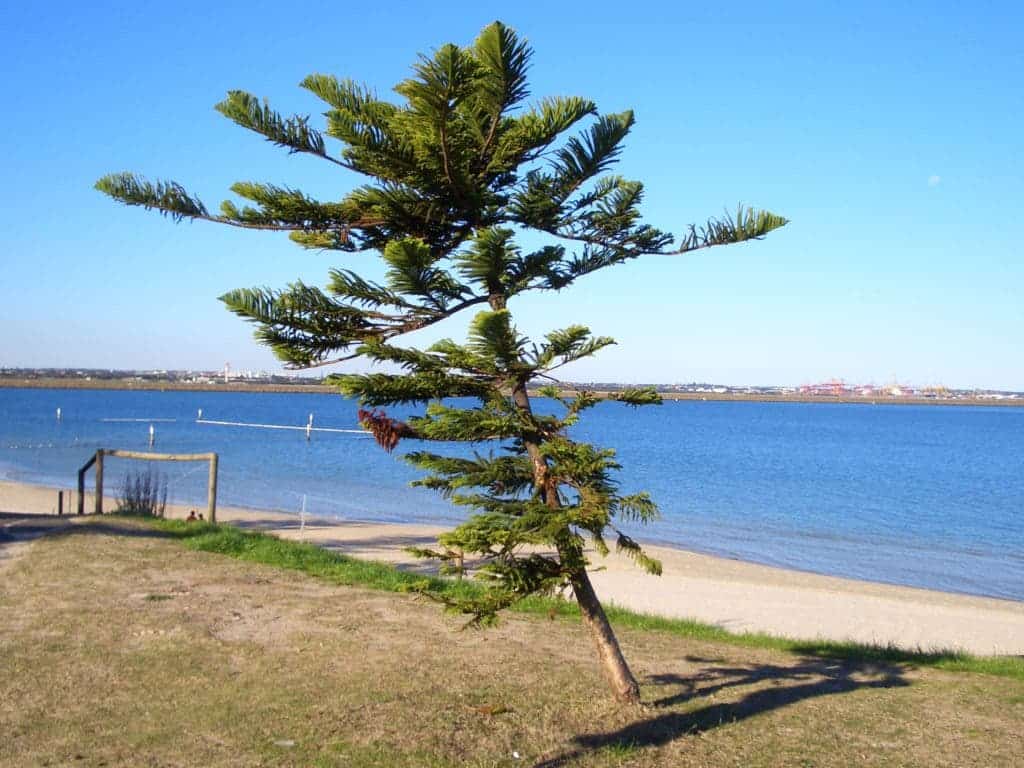
Cook pines (Araucaria columnaris) were once restricted to their native home of New Caledonia, a French territory comprising dozens of islands in the South Pacific. But once humans took a fancy of them, they arrived in all sorts of places in the world, from the tropics to the subtropics to temperature regions. What makes these peculiar pines fascinating is their tilt reminiscent of the famous Leaning Tower of Pisa. Remarkably, American researchers discovered there’s actually a pattern to the tilt: the farther away from the equator the Cook pine is, the greater its tilt will be. Moreover, the orientation is always facing the equator so they lean south in their northern range and north in their southern range.
Matt Ritter at California Polytechnic State University in San Luis Obispo was researching tree species for an upcoming book about urban trees in California. From tree to tree, he eventually got to the Cook pine which caught his eye. He eventually realized that the pine was always facing south. After a bit of digging around, Ritter found that the same trees in Australia were facing north. This prompted him and colleagues to launch a more thorough investigation.
The team studied 256 Cook pines across five continents ranging from latitudes of 7 and 35° north, and 12 and 42° south. The analysis confirmed that there was a pattern where the Cook pines would always lean towards the equator. On average, the trees tilt by 8.55 degrees or twice as more as tilted angle of the Leaning Tower of Pisa. The farther away from the equator you go, the more extreme the tilt gets. One Cook pine in Southern Australia was tilted at 40 degrees. This begs the question — provided it wouldn’t freeze to death — what tilt would a Cook tree have at the South or North pole? Clearly, there’s a threshold for how far the tree can tilt without collapsing but the researchers have yet to find it. It’s not even clear why the Cook pine follows this pattern in the first place.

Trees usually try to grow perpendicularly to the soil — but not all of them. The yucca palm found mainly in the United States seems to always point south which saves energy because it’s quicker to transport nutrients to the flowers. Plants naturally grow toward the sunlight. The barrel cactus grows southward toward the sun so much that it practically lies over on one side. However, this is the first time we’ve seen a tree do it so evidently.
It could be that this weird behaviour may be a genetic artifact due to humans spreading the tree through all sorts of places it would’ve not appeared in. It could also be an aggressive adaptation meant to catch more sunlight in the higher latitudes, New Scientist reports.
Until we learn more about the Cook pine, it’s always interesting to learn about quirks of nature; or rather about the weird, but fascinating effects of human intervention.
Journal reference: Johns, J. W.; Yost, J. M.; Nicolle, D.; Igic, B.; Ritter, M. K. (2017). “Worldwide hemisphere-dependent lean in Cook pines”. Ecology. doi:10.1002/ecy.1850.


